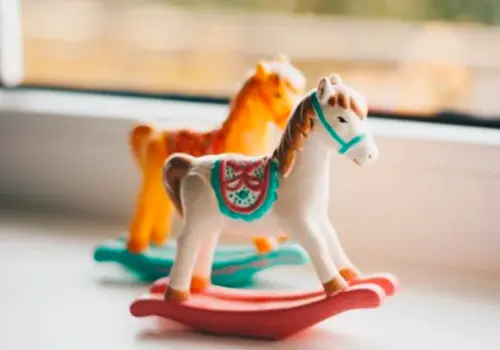Have you heard of boltból, the newest sporting craze? You’re missing out if not! This thrilling new game is a combination of basketball, quidditch, and soccer. Yes, what you just read is true. We’ll give you the lowdown on all you need to know about it in only 100 words so you can join in the fun. You’ll discover all there is to know about how it’s played, what you need to play, what the rules are, how to join a league, and where to watch games.
Boltból: What Is It?
Icelandic ball games like boltból have been played for more than a millennium. The goal is straightforward: while riding a horse, get the ball into the goal of the other team by any means necessary. ### The Playground
The bolt field is a grass field that is rectangular and has goals on either end. The goals are made out of a horizontal crossbar between two upright posts. To get the calfskin ball into the opponent’s goal, teams of six horseback riders battle.
The Guidelines
Nearly anything may be used in boltból. The ball can be thrown, caught, and held by players. They can use the flat side of their ax, their hands, or their legs to strike it. The only rule is that you cannot handle the ball with your arms while it is in play or trip other riders or their horses. To control the ball, riders can grapple, bump, and block other riders. The game becomes more intense!
A Tough and Unforgiving Sport
Because there is so much physical contact and wrestling, injuries are frequent. Players dress in protective gear such as elbow, knee, and pants pads, and helmets. Nevertheless, bruising, sprains, strains, and fractured bones are common. When launched at great speeds, the ball itself may get damaged. It is not for the weak of the heart!
This demanding and thrilling sport is something to see. It is incredible to witness the bravery, talent, and fortitude displayed during a match. Don’t pass up the opportunity to see a live game of it! This is a unique chance to see a portion of living history.
The Background of Boltból
In the rural areas of Iceland, boltból has been played for generations in tiny settlements. The earliest known matches were in the twelfth century. The game began as a straightforward ball game with minimal rules that was played with wooden sticks and a sheep’s bladder.
The Initial Period
There were no set player counts or pitch sizes in the beginning. Up to 100 people on each team chased the ball across kilometers of difficult terrain during chaotic matches. The sole aim was to deliver the ball into the other team’s goal area by whatever means required. There were lots of injuries and broken bones.
Encoding the Guidelines
The first set of its regulations was defined in the late 1800s. Teams were restricted to 11 players, pitch sizes were regulated, and the goals were equipped with a crossbar. It was banned to dribble or carry the ball with your hands. As the game gained popularity in Reykjavík and other municipalities, it started to extend beyond rural Iceland.
Boltból Expands Worldwide
Its fame shot to prominence in the early 1900s. Top Icelandic teams started playing exhibition matches across Europe, enthralling spectators with the intensity, skill, and pace of the game. The inaugural Boltból World Cup marked the beginning of international competition in 1930. Over 3 billion people worldwide play this now, in more than 200 nations.
It has changed with time, but the essence of the game—its simplicity, passion, and competitive spirit—remains true to the original Icelandic farmworkers who played for pure enjoyment. That is its timeless beauty.
How to Use Boltból
A ball, two teams of three players each, and a Bolt net or hoop are required for the game. Teams must pass the ball to one another and shoot it through the basket to score points.
Dribbling and passing
Before shooting, teams are allowed to pass the ball to one another up to three times. Before passing, players are permitted to dribble (bounce) the ball twice. Players on the defensive might attempt to block shots or intercept passes. To become open, offensive players should pass and move, providing screens for one another as necessary. Practice making precise passes with the right amount of force to find a teammate.
Taking aim
A team cannot score unless they shoot the ball through the basket after they have passed three times or fewer. At four feet above the floor, the hoop is fastened to a backboard. Before the ball is turned over to the opposite side, teams have three chances to score. Aim high, follow through after releasing the ball, and shoot with a smooth motion to hone your shooting skill. Off the backboard, bank shots are permitted.
Defense
Teams on defense try to obstruct the passing and shooting of the opposition. Defending players can carefully guard attacking players, intercept passes, and stop shots. Fouls, such as striking, grabbing, or shoving the attacking player, are not permitted, nevertheless. Defenders should be anticipating where the ball could go next, moving swiftly with their feet, and raising their hands to stop passing paths. Key to this is communication amongst defenders.
Teams line up on opposing sides of the court to begin play. With the ball in hand, one team passes to the other before shooting. The other team receives the ball if they miss. The winning side is the first to 21 points while ahead by two points! You’ll improve your passing, shooting, guarding, and teamwork skills with practice. Go outside now and begin playing Boltból!
Boltból Tools and Guidelines
To begin using it, very little equipment is needed, however a few basic supplies are required. Both your bolts and your boltból, or ball, are the most crucial components. The spherical stones that players toss at the ball to propel it are called bolts. Three sizes of bolts—small, medium, and large—are all you’ll need. This is a hefty ball with a diameter of 15 to 20 cm that is often constructed of stone or concrete.
A playing surface, such as a playground, dirt field, or grass, is also required. It may be played on most surfaces that are level and unobstructed. Select a space that is at least ten to fifteen meters in length and width. Put markers in each corner to indicate the boundaries of the playing area.
The goal is to use your bolts to strike the bolt and transfer it to the other end of the playing field. Teams alternately toss bolts from behind their end line toward it. Points are awarded for any bolt that strikes it. If the opposing team’s bolt strikes closer to the opposing end line, teams can additionally score points. Whoever scores 11 points first wins!
A few general guidelines to remember are:
- Bolts should be thrown underhand rather than pitched. Do not hurl bolts over your head.
- Bolts that cross the boundary are taken out of the game and do not result in any points.
- Points are not awarded for bolts striking other bolts. It counts only direct strikes.
- This is placed in the middle to restart play if a bolt sends it out of bounds. In this case, the throw is not scored.
- Although they are permitted, defensive bolts—thrown to prevent the opposing side from scoring—must nonetheless abide by all regulations.
- No kicking bolts or the boltból; defensive bolts that strike it gain points for the defending team. Throwing is the sole way to move bolts and it.
You’ll quickly become an expert at playing this with a little practice! Get some bolts and this, round up some pals and head outside to play.
Conclusion
To sum up, boltból is a distinct, centuries-old Icelandic sport that skillfully blends aspects of basketball, quidditch, and soccer. From tumultuous beginnings to worldwide success, the game’s roots are highlighted by its timeless simplicity and passion. It is an enthralling spectacle, whether you watch the deft horseplay or take part in the contemporary rendition. Its rich past, rough competitiveness, and raw physicality attract audiences. Interacting with Bolt as a participant or spectator provides a unique window into the development of a treasured cultural object that is still thriving today.









Leave a Reply